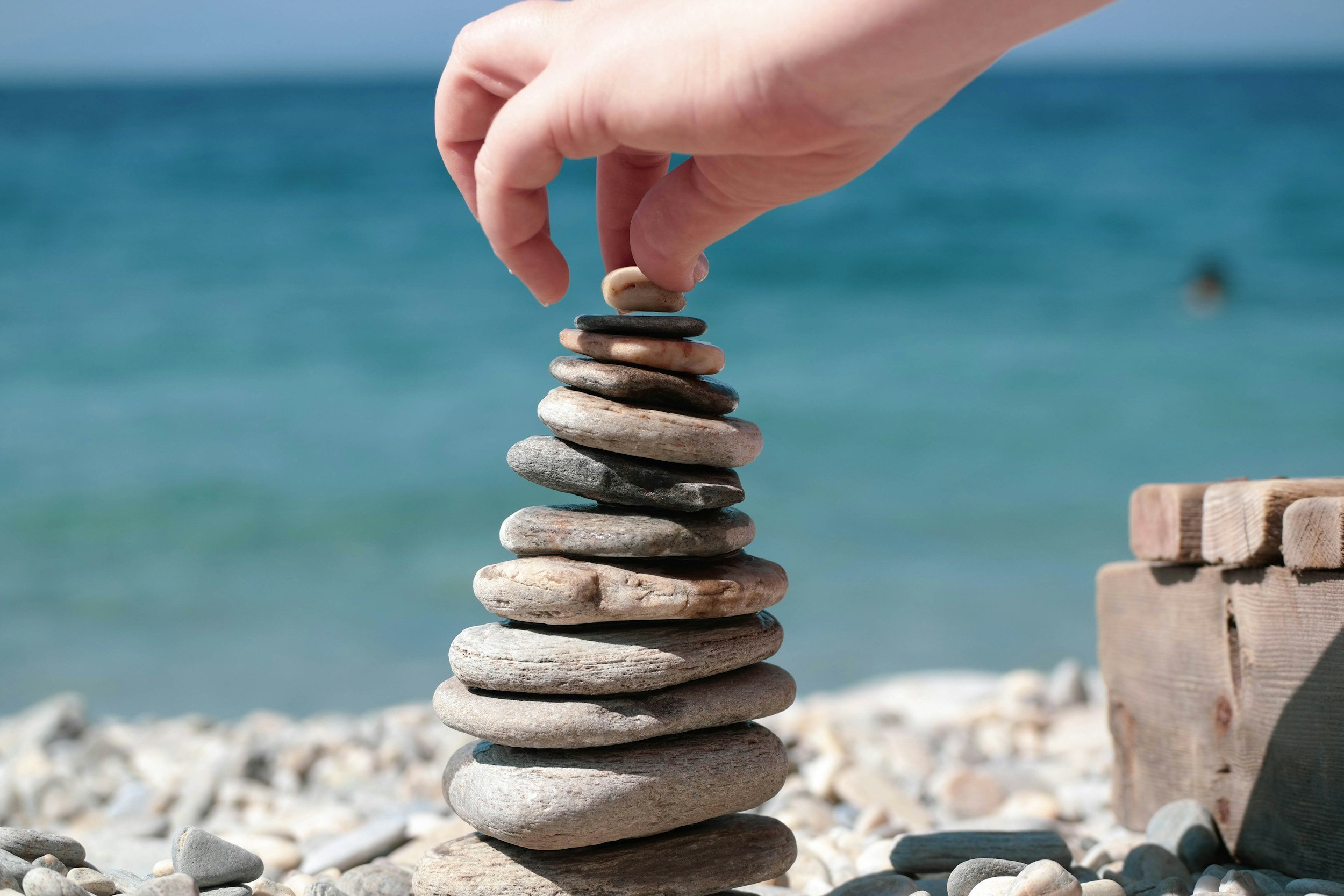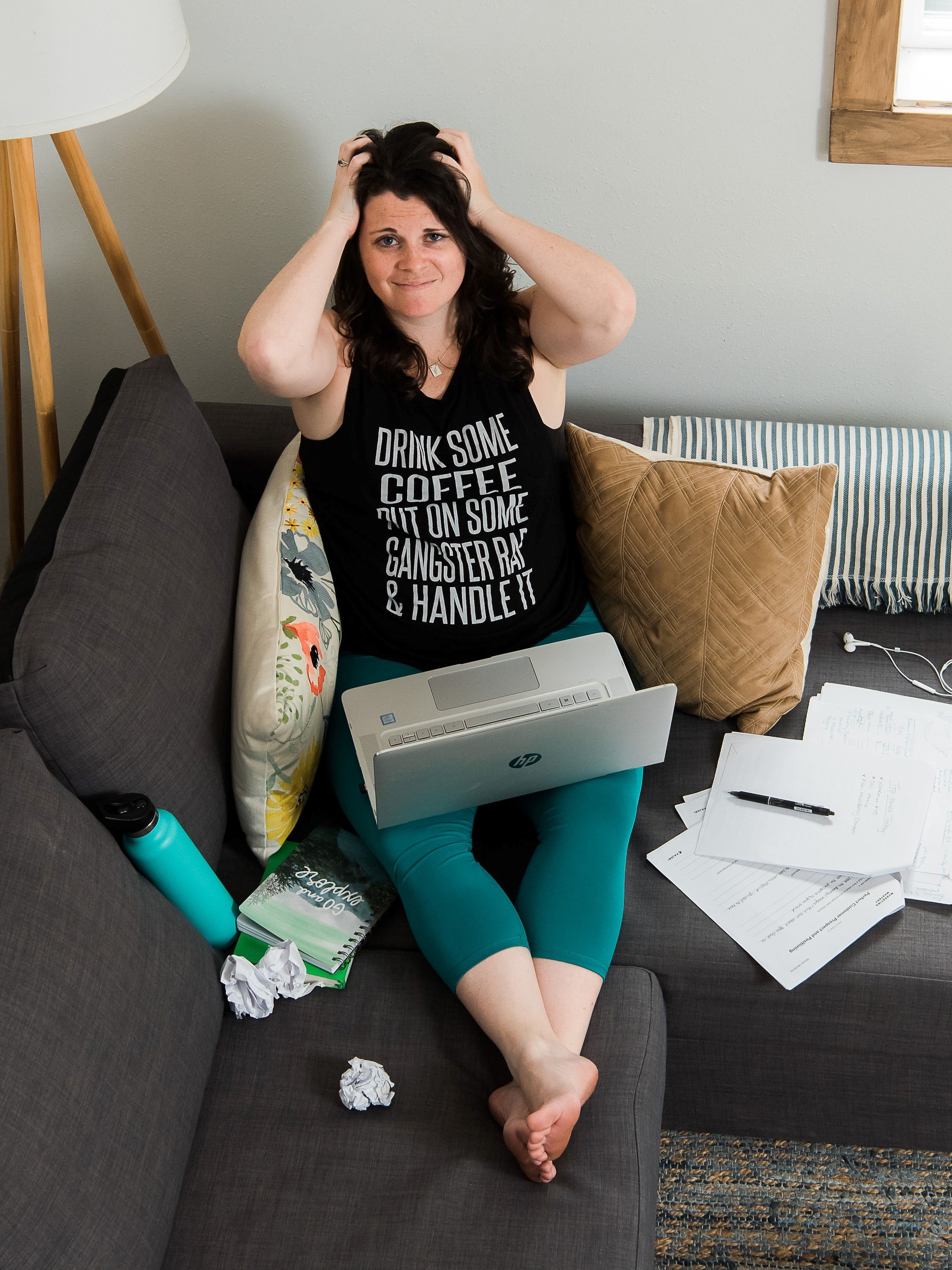What's the Difference Between Stress & Burnout?
Let’s get one thing straight:
BURNOUT IS ❌NOT❌ STRESS
One of the biggest misconceptions I see is that people mistake burnout for regular stress. And no, this isn’t just semantics—it’s an essential distinction.
From what I’ve seen, people don’t exaggerate their stress to make it dramatic; they actually downplay burnout to make it feel normal. And that’s a problem! When we minimize burnout, we’re more likely to let it spiral until it causes serious physical, mental, and emotional harm.
Stress vs. Burnout: Here’s What You Need to Know
Stress and burnout might overlap, but they’re not the same. Stress is usually acute—it’s short-term and specific to a particular situation. Burnout, on the other hand, is chronic. It builds up over time, accumulates from unmanaged stress, and becomes a state of ongoing depletion. Let’s dig into this difference a little more.
Stress is Temporary; Burnout is a Slow Burn
Think of it like an illness:
Stress is like a temporary illness—a cold, maybe the flu. It knocks you down for a while, but with rest, you’re back on your feet.
Burnout, though, is more like a chronic illness. It doesn’t go away with a weekend off; it can be deeply debilitating, affecting not only your work but also your relationships, goals, and motivation. Burnout depletes you on a fundamental level.
This difference is especially intense for high-achievers, who tend to define their worth by what they accomplish. When burnout impacts their ability to perform, it often feels like a personal failure. High-achievers in burnout can seem apathetic and disconnected—miles away from their usual driven, energetic selves.
Stress vs. Burnout: The Short-Term vs. Long-Term Perspective
Here’s another way to think about it:
Stress is often a short-term experience. Maybe it’s a big project that’s demanding a lot of time and energy, but you know it’s just for a week or two. You’re in survival mode temporarily, and after that, things go back to normal. It’s tough, but you’re able to recover.
Burnout, on the other hand, stems from unsustainable demands over months or even years. It’s the accumulation of overcommitting, having poor boundaries, and deprioritizing rest. Burnout is what happens when that intense, all-consuming commitment becomes your normal, and you don’t give yourself the space to recharge.gaging in an unsustainable level of commitment for months and maybe even years at a time.
Real-Life Example: The Burnout Trap
Let me illustrate this with an example. One of my clients came to me absolutely burned out—emotionally frayed, crying often, and regularly working 10-12 hour days, sometimes clocking 70+ hours a week. This wasn’t just a stressful project; this was her life. She realized that she’d created a work environment where burnout was her default.
After we’d worked together for a few months, she began to recognize her burnout triggers and learned how to manage them. When a high-stress project came up, she was able to treat it as a temporary demand instead of letting it tip her back into burnout mode. With new awareness and systems in place, she managed to avoid falling into old patterns—even when work got intense.
Stress vs. Burnout: The Light Switch and the Dimmer Switch
Think of stress and burnout like a light switch and a dimmer switch:
Stress is the light switch. It can be intense, but it turns on and off. You might have a period of stress while tackling an intensive project, but when it’s over, the stress subsides.
Burnout is the dimmer switch. You might start fresh and energized, but with every period of intense work, you throw yourself in without setting boundaries. Each time you let self-care slide and dive straight into the next challenge, you’re turning up that dimmer switch a little more. Eventually, that dimmer switch is all the way up, and you’re left burned out, with no reserves left.
You can see how this distinction plays out in everyday life:
Stress lets you step back when the project or demanding period ends, allowing you to relax and recharge.
Burnout keeps ramping up over time if you don’t give yourself a chance to step back, recharge, and reset your boundaries. Left unmanaged, burnout becomes a constant that can impact every area of your life.
So, Here’s My Message: Don’t Mistake Burnout for Stress
Burnout is a Choice, Not a Default
Burnout shouldn’t be the price of success. It doesn’t have to be something you just “deal with” as a high-achiever. To avoid burnout, you have to start by recognizing the difference between everyday stress and true burnout.
When you admit that what you’re experiencing might be burnout, not “just stress,” you empower yourself to make a change. Burnout is a message, not a weakness—it’s a sign that something needs to shift.
Take Charge: Make Burnout Prevention a Priority
I’m on a mission to help high-achievers make burnout prevention a choice. If you’re constantly teetering between stress and burnout, here are a few strategies to start making that shift:
Set Clear Boundaries: Stop treating every demand as a non-negotiable. Decide what’s essential and what you can delegate or postpone.
Prioritize Real Self-Care: Real self-care isn’t about bubble baths and “treat yourself” days—it’s about habits and routines that restore your energy and well-being consistently.
Develop Self-Awareness: Keep track of your own burnout triggers. This is data you can use to protect yourself. (Check out my list of self-awareness journaling prompts to get started.)
Recognize and Respond to Early Signs of Burnout: Learn to spot burnout symptoms early. If you’re feeling increasingly apathetic, exhausted, or disconnected, these are signs that something needs to change.
The Bottom Line: Don’t Downplay Your Burnout
Burnout is real, and it’s different from stress. Ignoring or downplaying burnout only allows it to deepen. If you want to thrive without burning out, start by understanding the difference between these two. Stress is something you can move through and recover from. Burnout, on the other hand, requires intentional change—realigning your boundaries, habits, and expectations to create a more sustainable way of working and living.
So, let’s make burnout a choice, not a default. Don’t let it run you into the ground. Acknowledge it, address it, and take steps to keep your well-being and ambition aligned.
















